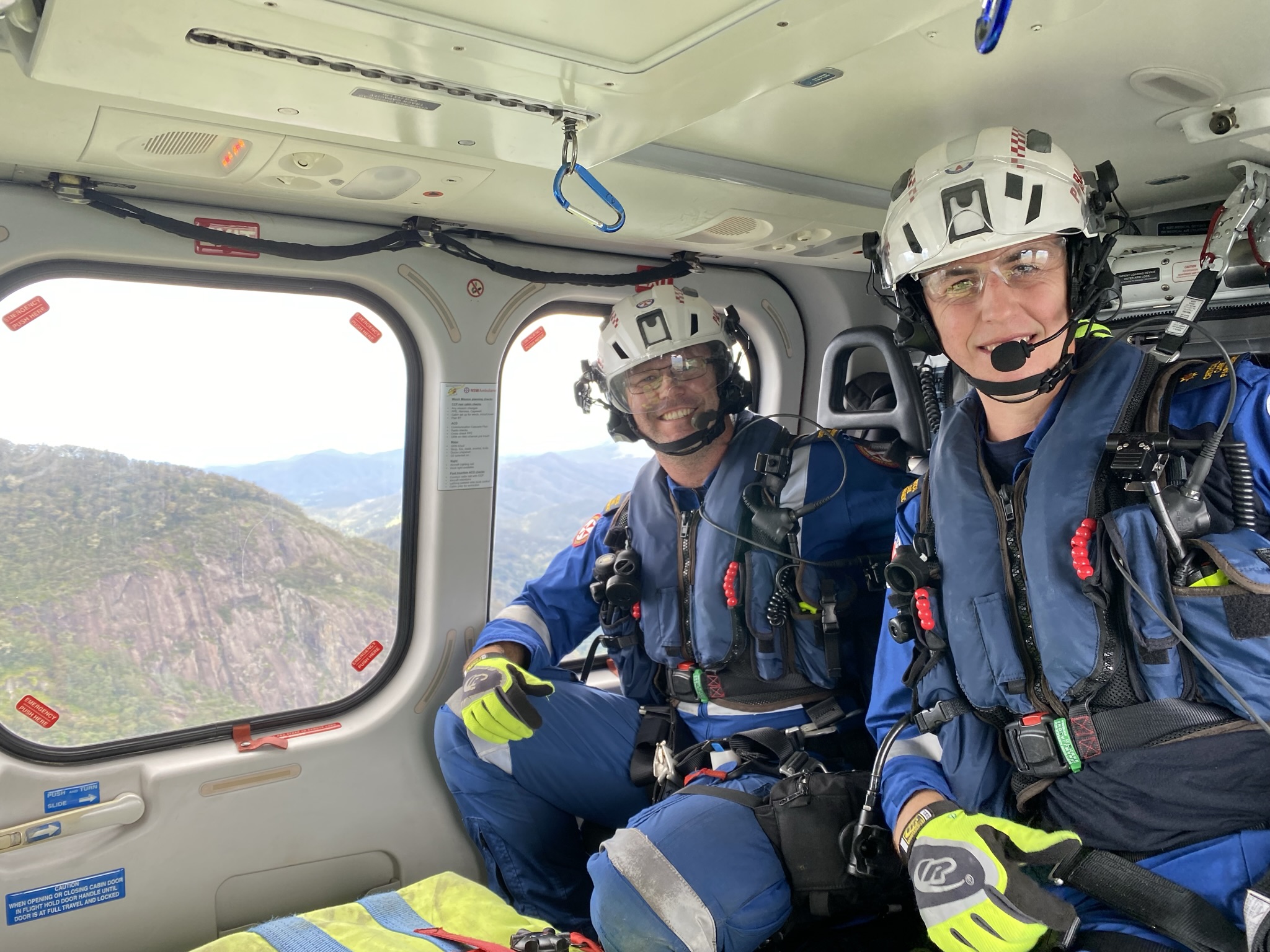
At different times and in different ways, COVID-19 has presented a range of challenges to our workforce over the course of the past year, in particular.
Northern NSW Helicopter Operations’ Zone Manager Shane Harris said his staff of Critical Care Paramedics, along with the pilots, aircrewman and doctors who make up the helicopter teams for the three bases he oversees, are beginning to experience their most challenging COVID-19 related period right now, as the regions open up to an influx of holidaymakers.
Shane said his team had largely not experienced the constant treatment and transfer of COVID-19 patients that other NSW Ambulance clinicians have so tirelessly and diligently carried out. But now that cases are easing, borders are opening and people are itching to get out of Sydney, Shane said there has been a steep increase in rescues his team have had to complete.
“Since we’ve emerged out of COVID our workload has been the busiest it has ever been,” he said. “They’re (patients) just getting themselves into complex environments, like the bush, and doing adventure activities…. things like abseiling.
“There are just a lot more people out and about now.”
Lismore Helicopter Base Team Leader William Brand has also noticed a rise in rescues coinciding with more people getting out and about in the regions.
A recent example included two Lismore-based Critical Care Paramedics assisting their counterparts in Queensland by crossing the border to help rescue a walker who had fallen nearly 20m in Springbrook National Park.
His team are also bracing for a possible rise in COVID19 cases within the community, given the huge volume of people who currently are and will continue to travel to the tourist hotspot of Byron Bay during the warmer months.
“Byron Bay has doubled in the number of people there,” he said.
“It has gone back to what it was in 2019. “Coming into summer, with the fact that such a large amount of travel will occur regionally rather than internationally, I think it will be interesting… I think regional NSW will really feel the pinch.”
But while there has been an increased workload for the Northern NSW Helicopter Operations team (which includes bases in Lismore, Tamworth and Belmont), a lot of groundwork has been put in place to help manage the spike in rescue jobs.
This includes extensive training and the implementation of COVID-19 safety procedures, which in turn have been communicated and endorsed by the Local Health District doctors and Westpac Rescue pilots who work alongside Critical Care Paramedics on helicopter rescue jobs.
“All that training has prepared us really well for some of our busiest and most challenging months,” Shane said.
“What it has done is bring us closer together to ensure the risks are really well communicated and managed in a very small team and tight-knit environment.”
